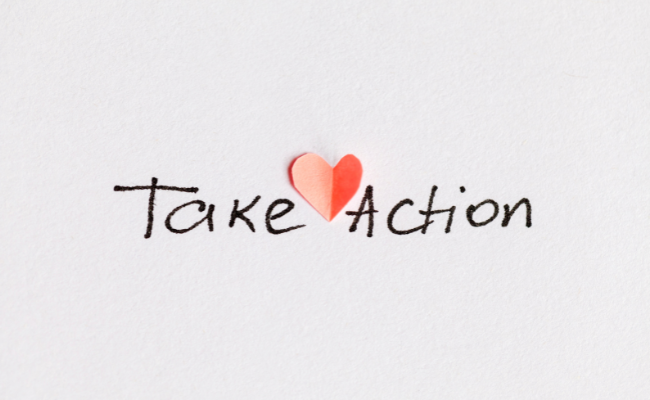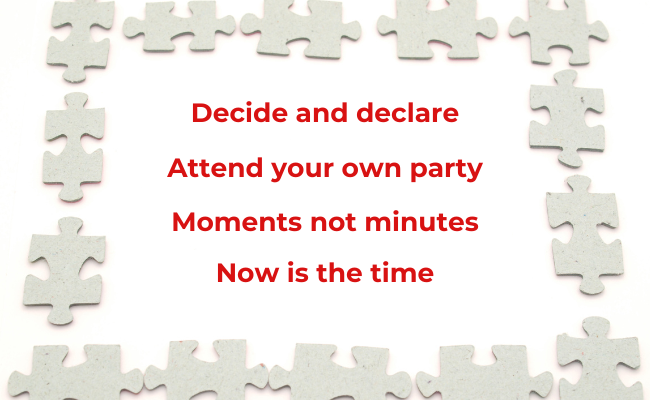The Power of Micro Actions and the DAMN Manifesto with Bevin Farrand
”The micro-actions are the smallest possible actions that you will actually take. If you are feeling frozen, then your micro-action is not small enough.”
— Bevin Farrand
I had the pleasure of speaking with Bevin Farrand, speaker, coach, and the author of Your DAMN Manifesto: Discover the Keys to Personal Transformation and Bringing Your Biggest Dreams to Life.
Her DAMN framework has inspired thousands to connect with the people they love, do the “crazy thing” that makes all the difference and, when given a choice, to take the damn chance.
We discuss:
- How Bevin started the Take the DAMN chance movement
- The four parts of the DAMN framework
- Deciding and declaring what you want to achieve
How Bevin started the Take the DAMN chance movement

Bevin and her husband Mark took a whirlwind trip to France for her 40th birthday in 2019, despite the fact she had recently lost her job and they would be spending the same amount of time in the air as they would on the ground. They did it anyway.
It rained the whole time, but for them, it might as well have been full sunshine. They reignited their couple identity and were excited for the future.
But after only five days back home—in the middle of holiday chaos with 25 family members in town for Thanksgiving—her husband passed away in the night.
“The day after Thanksgiving, I went upstairs to wake up Mark, and he wasn't breathing. He had passed away in the middle of the night, completely unexpectedly,” Bevin says. “We had no idea that he had undiagnosed heart disease. One of his arteries was 95 percent blocked, and the other was 50 percent blocked.”
There she was, suddenly a solo parent of two little children, carrying the weight of grief on her shoulders without anywhere to set it down.
Her coaching business was thriving, but it was still new and hadn’t stood the test of time on whether it would be a consistent source of income. She was floundering on what to do and how to exist in a world without the love of her life—without her best friend.
“About a month after that, I made a post on Facebook about the trip and my birthday and losing Mark,” she says. “And I ended that post by saying, ‘Whenever you're faced with a choice, just take the damn trip.’ Because I was so happy that we had gone on that trip together, that we had chosen—even though it seemed completely crazy—to do that.”
Her words inspired people to take action, to stop pushing dreams and goals to the side in the name of practicality, or under the gauze of excuses we make for ourselves to smooth over inaction.
And so, what would become the Take the DAMN Chance movement was born.
The four parts of the DAMN framework

DAMN isn’t just there for shock value or to stand out—it stands for something and makes up the whole of Bevin’s approach with clients and how she leads her life.
DAMN represents:
- Decide and declare
- Attend your own party
- Moments not minutes
- Now is the time
Decide and declare
The DAMN framework starts with a DAMN manifesto within decide and declare. This phrase is the foundation of what it means to live with these principles in mind.
Attend your own party
This saying is about mindset, focusing on how we create our own experience through personal filters and thoughts. Staying out of the “What if?” and focusing on the “What is” is paramount for leveraging the power of DAMN.
Moments not minutes
Moments not minutes means permitting ourselves to stay in the moment and embracing the present without feeling guilt about where we feel we should be instead—choosing to lean into the moments that truly matter.
Now is the time
We don’t know what is going to happen at any instant. There is no way to know for sure what will come tomorrow or the next second. As Bevin says: that isn’t a reason to live scared, it’s a reason to live fully. There is never going to be a perfect day to do that thing you’ve always wanted to do, so now is the time.
Deciding and declaring what you want to achieve

When Bevin decided to move forward with the third round of IVF she and her husband had planned before his passing, she got some fearful pushback from those she confided in about her decision.
“I knew so deeply that it was the thing I would regret. And I have come to see that nobody else is ever going to have to live with your regrets,” she says. “We stumble around unconsciously asking people for permission by saying things like, ‘I’m thinking about quitting my job, do you think I should?’ or ‘I want to move to Italy, what do you think?’”
She took a step back from people's concerns and she realized they thought she was asking permission when she was actually inviting them to support her if they were willing and able to give that support.
“When you invite somebody to support you, it's a different energy,” she continues. “The difference in support versus permission is that their decision about whether or not to support you is not going to change your decision about whether or not to do it.”
Support can come in all shapes and forms once we step away from the permission mindset and embrace our decisions, declaring our intentions and encouraging those who are on board to lend their support.
Breaking goals into micro actions
These declarations and decisions don’t have to be a huge move to Italy or quitting a job. They can start small, in manageable steps. We don’t want to get stuck in our mindset work, banging our heads against a wall—there must be action. Take a walk, get up and dance, create motion.
Once we know where we want to go and what we want to achieve, we must break down that goal into the smallest possible action we can take toward it.
“The micro-actions are the smallest possible actions that you will actually take. If you are feeling frozen, then your micro action is not small enough,” Bevin says. “Everything we do is just a series of micro-actions—it's just that, over time, they get bigger and easier, and we don't have to think about them as much.”
Bevin equates these micro-actions with what it was like when first driving a car—we would have a mental checklist of micro-actions running in our mind as soon as we sat down. Buckle the seatbelt, check the mirrors, turn the key, etc.
After a while those all became second nature, and the “checklist” for driving became “Get in the car and drive.” We still do all of those micro-actions, but they’re natural now, and we’re free to focus on the larger picture.
We must build up a tolerance and cadence of micro-actions that build towards our main goal, no matter how small. Each one is part of a larger whole.
Where in your life have you been afraid to take action? What are you waiting for?
Be sure to check out Bevin’s full episode for further insights into the DAMN framework and learn more at BevinFarrand.com!








